Social commerce isn’t slowing down. In 2016, according to Business Insider, social increased its share of eCommerce referrals nearly 200% from 2014 to 2015.
And businesses are paying attention. A quick Google search shows social commerce is topping the list of predictions for huge 2016 eCommerce marketing trends:
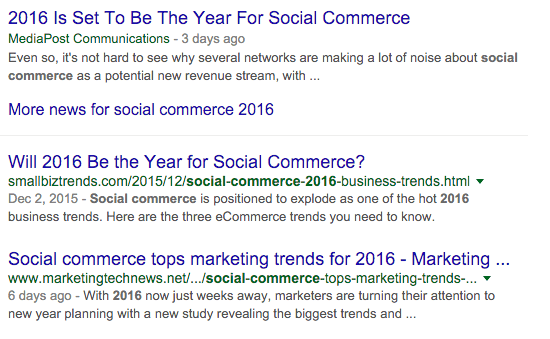
To help you prepare your 2016 eCommerce marketing plan, we took a look at the most important social stats from around the web to find trends to watch for in 2016.
Top Social Commerce Trends for 2016
Social commerce is an important part of the customer journey. Social traffic may not always be easy to understand, and it doesn’t always directly lead to purchases.
Pixlee’s eCommerce stats show 74% of consumers rely on social media to guide their purchases, and 43% of consumers are more likely to buy a new product when learning about it on social media.
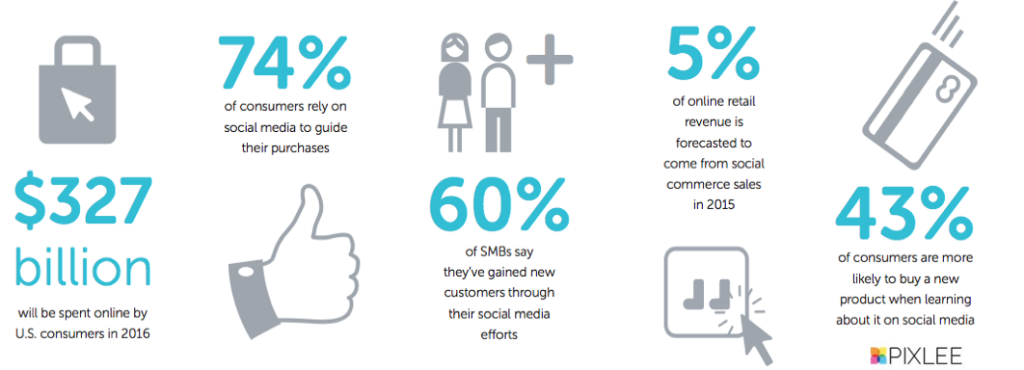
Additionally, customers rely on quick social reactions to customer complaints and questions, leading many brands to institute entire dedicated customer service teams for social. Social commerce is enormous for boosting brand loyalty, making it just as important for customer retention as acquisition.
Social can also help you grow your overall eCommerce traffic and you can use social to increase your sales through referral and word-of-mouth buzz. Big brands have already begun to take advantage of social in multiple ways, understanding it has a place in the entire customer journey and experience of your brand.
Trending Platforms for Social Sales in 2016
With so many platforms to be on and conversations to monitor, what’s a brand to do?
The big players still matter.
The Facebook vs. Twitter debate is still going strong, but with the introduction of new social commerce platforms like Pinterest and Instagram, the question of where to invest your resources is only going to get more complicated.
As of October 2015, Small Biz Trends reports there were more than 60 million “shop-able” pins on Pinterest. With the adaption of Buyable pins, stores are able to sell on Pinterest, so there is a stronger incentive to invest efforts in a Pinterest marketing strategy.
Changes in consumer experience shopping on different social sites will impact which sites dominate the eCommerce market. For now though, Facebook is still king for driving traffic.
Shopify reports Facebook brings much more traffic that Twitter.

Also, this traffic is more engaged than other social sources. Yotpo stats found traffic from Facebook views more pages and spends more time on on site than Twitter traffic. With the addition of Facebook shopping bots, eCommerce stores can be expected to invest more efforts into adapting to conversational commerce trends.
But don’t write off Twitter yet. Traffic from Twitter has a higher AOV and CVR than Facebook.
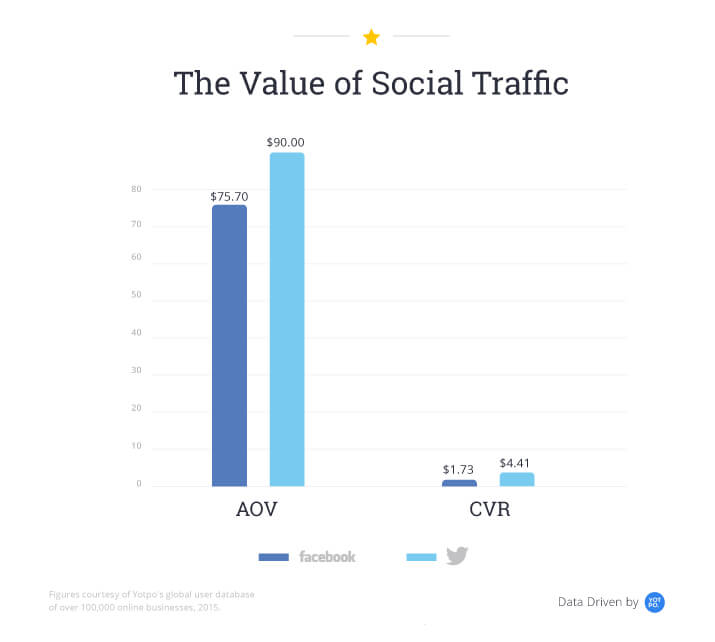
Additionally, not all industries are impacted equally by Facebook. Shopify stats also shows that the social platforms that matter vary by industry. It’s important to not just classify platforms as one-size-fits-all, but to strategize for specific platforms.
You need to consider your industry, your audience, and your goals when choosing how you want to create a social plan for 2016.
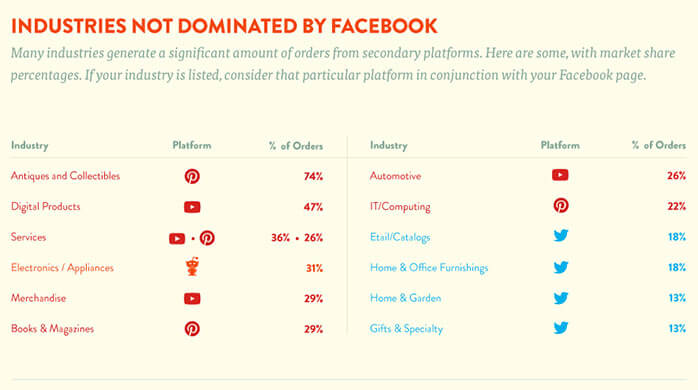
In 2016, You Must Optimize Social Strategies Per Device
People are connected all the time, and devices matter more than ever. What’s most important isn’t necessarily which platform you invest in, it’s how you create mobile-specific customer experiences per platform.
For example, while less than 5% of LinkedIn visitors come from mobile, 96.88% of Instagram visitors are accessing on mobile.
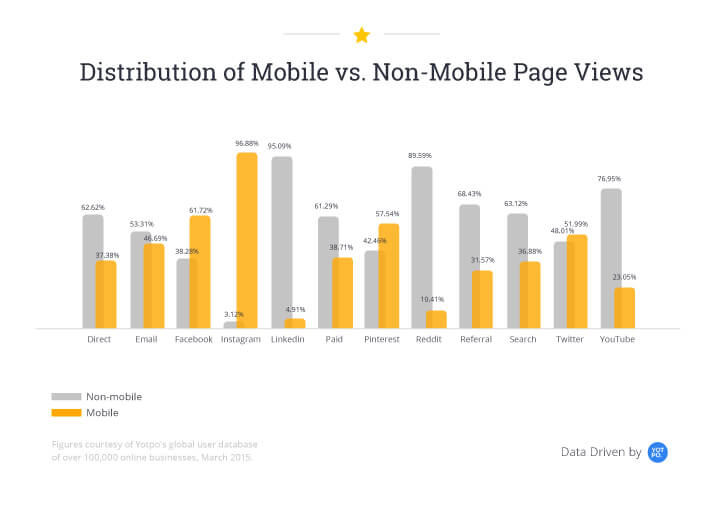
This means that it’s most important to be strategic on social by creating channel specific marketing.
A general rule of thumb: images and micro-content do great on channels that have a largely mobile audience, while desktop users can handle long-form content better.
- 6 Strategies to Optimize Social Commerce for Mobile Shoppers
- Mobile Marketing to Multiple Screens
- Mobile Meets Social: How to Hack mCommerce Traffic
And a fun finding: social commerce engagement rates vary by geographic location.
Take a look at how Facebook bounce rates vary based on state.
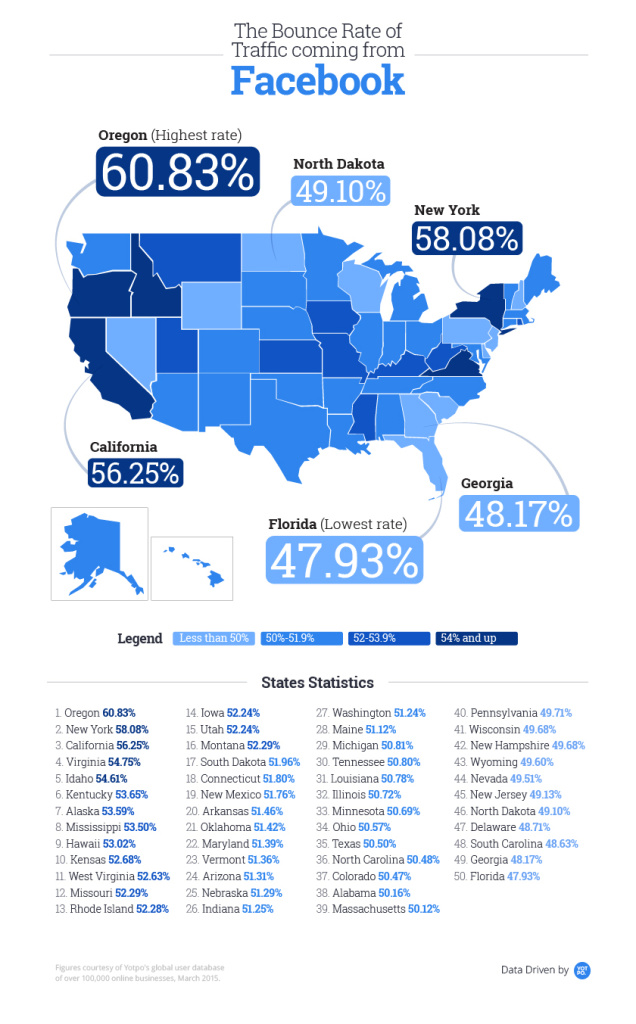
There you go: here’s what eCommerce stats from top companies have to say about what’s up in the world of social commerce and eCommerce trends to look out for.
In 2016, it’s all about getting specific with strategy. There’s no such thing anymore as just “being on social.” You need to have strategies optimized per channel, per device, and even by location.


